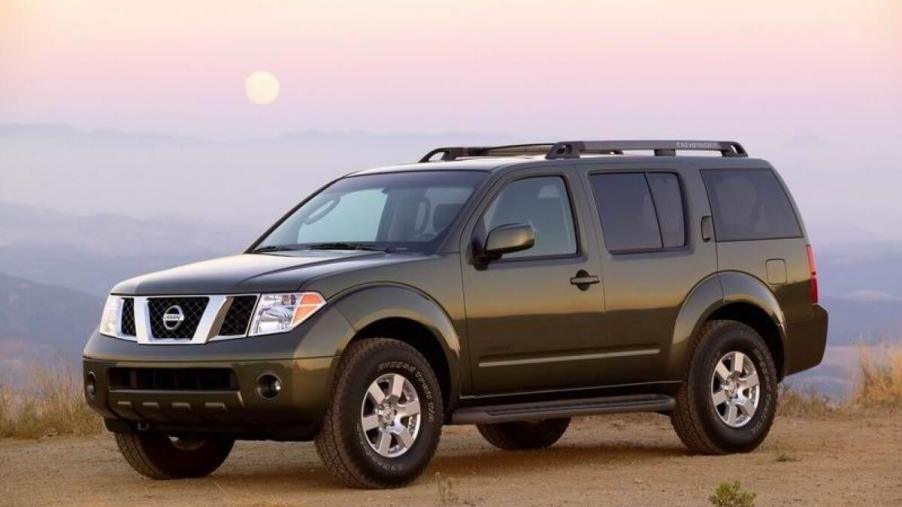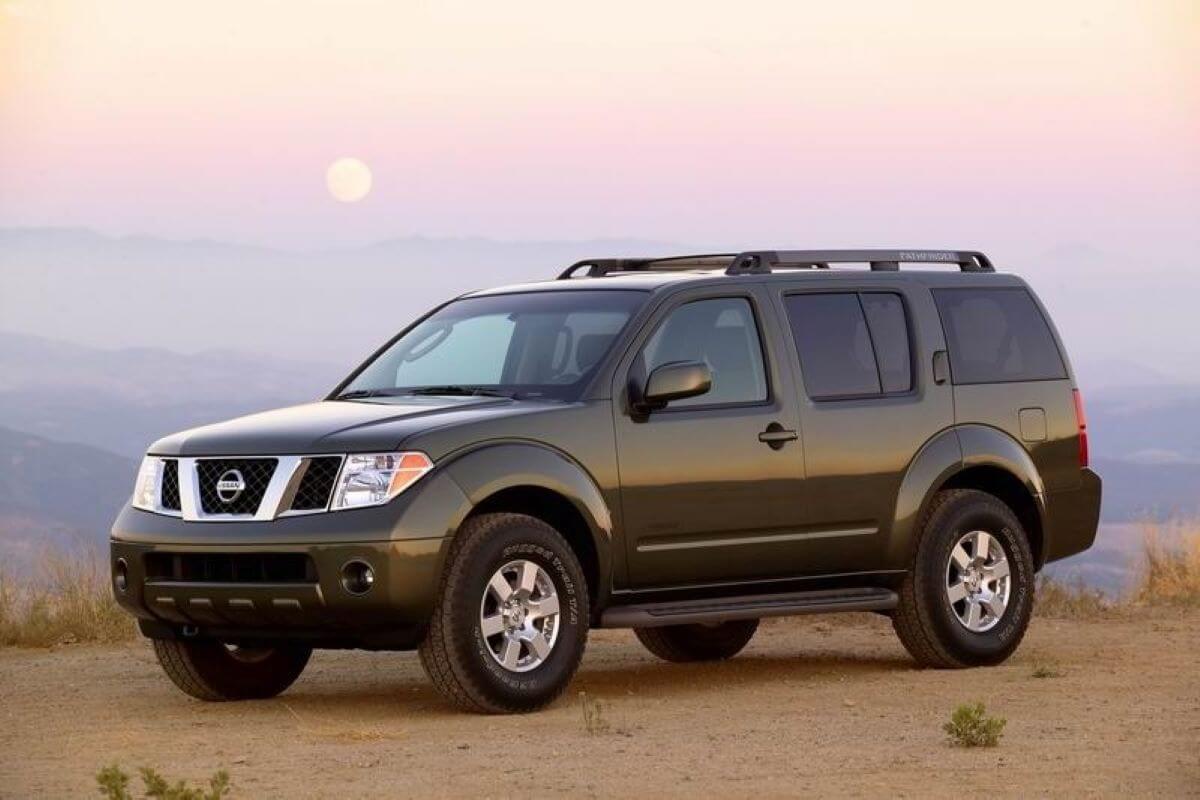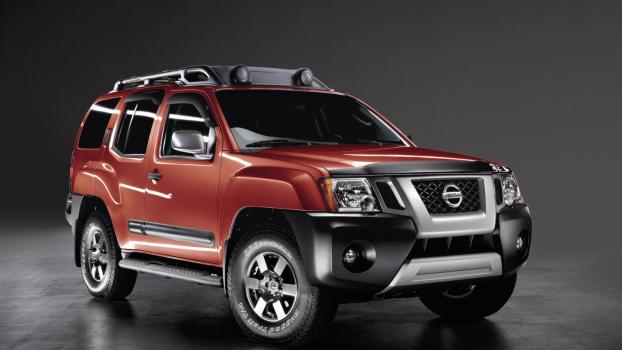
3 Used Nissan Pathfinder Years to Avoid
When it comes to owning a used midsize SUV like the Nissan Pathfinder, maintenance is essential to keeping it running smoothly and ensuring its reliability. However, not all model years of the Nissan Pathfinder are created equal. As such, some may experience more maintenance issues than others. Three Nissan Pathfinder years to avoid are:
- 2005 Nissan Pathfinder
- 2006 Nissan Pathfinder
- 2007 Nissan Pathfinder
The 2005 Nissan Pathfinder has common transmission concerns
The 2005 Nissan Pathfinder has over 2,000 complaints on CarComplaints. Moreover, it racked up even more from the National Highway Traffic Safety Administration (NHSTA). This model year has been known to have several maintenance issues, with the most prominent being transmission failures.
It also has received the most overall complaints. Many drivers report problems with its transmission shaking the car or even failing altogether.
This Pathfinder problem typically occurs around 102,000 to 123,000 miles and can cost an average of $3,800 to $3,900 to repair.
Additionally, there have been reports of coolant leaking into the transmission, which occurs around 90,000 miles and can cost an average of $6,300 to repair. This severe issue can cause significant damage to the transmission if not addressed promptly.
Other common trouble spots include the engine, fuel system, cooling system, and electronics. It has four recalls and one NHSTA investigation.
2006 Nissan Pathfinder issues you should look out for
The 2006 Pathfinder has over 1,000 complaints, five recalls, and one NHSTA investigation.
If you own a 2006 Nissan Pathfinder, it is essential to be aware of the coolant leak problem, just like the 2005 model, which can cause the transmission to slip and result in an average repair cost of $4,000.

Another issue is worn-out timing chain guides, which typically occur around 101,000 miles and can cost an average of $1,800 to repair.
Some owners have also reported transmission slippage at around 113,000 miles, with an average repair cost of $4,500.
These maintenance issues can cause significant inconvenience and expense for Pathfinder owners, and they should be addressed promptly to prevent further damage to the vehicle.
Other problem areas include the engine, fuel system, drive train, electronics, and cooling system.
The 2007 Nissan Pathfinder isn’t left out when it comes to complaints
The 2007 Pathfinder has over 1,000 complaints, two recalls, and one NHTSA investigation. There have been reports of radiator leaks that can get into the transmission.
This usually occurs around 114,000 miles and can cost an average of $3,900 to repair. Averaging $1,700 in repair costs, timing chain problems have also been reported by some owners at around 76,000 miles.
The 2007 Pathfinder’s transmission has also been known to fail at around 119,000 miles, with repairs costing, on average, $3,000 to make.
In order to avoid major inconveniences and costs in the future, owners must remain informed about these potential maintenance issues.
Other trouble areas include the engine, fuel system, electrical system, and drivetrain.
Other problematic model years of the Pathfinder
The Pathfinder has had other troubling model years. For instance, the 2008 Nissan Pathfinder has had problems with cracked radiators, which can cause coolant to enter the transmission and lead to significant transmission failure.
This issue typically occurs around 118,000 miles and can cost an average of $3,900 to repair. Additionally, some owners have mentioned experiencing vibrations at about 95,000 miles, with a $4,900 average repair cost.
Moving on to the 2013 Pathfinder, owners have reported transmission failure at about 57,000 miles, with a $4,600 average repair cost. A significant annoyance, transmission jerking, has also been reported by some owners at about 27,000 miles.
Around 44,000 miles, the 2014 Pathfinder has a history of excessive stuttering; the average repair for this issue costs $4,400. Additionally, some owners have reported hatch strut mount rust issues around 61,000 miles, which can cost an average of $1,600 to fix.
The Nissan Pathfinder is not exempt from typical maintenance issues, which can be very frustrating for owners and expensive. Regular maintenance and servicing can help prevent many of these issues, and it’s always a good idea to keep an emergency fund on hand in case of unexpected repairs.





